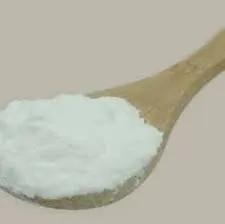Types of Chlorine Used in Water Treatment
Water treatment is a critical process that ensures the safety and quality of drinking water. One of the most common methods for disinfecting water and ensuring its safety is the use of chlorine. Chlorine is effective in killing bacteria, viruses, and other pathogens, making it essential in both municipal water supplies and wastewater treatment. There are several types of chlorine used in water treatment, each with its unique properties and applications.
1. Chlorine Gas
Chlorine gas (Cl2) is one of the oldest and most effective forms of chlorine used in water treatment. It is a pale green gas with a pungent odor and is typically stored in pressurized cylinders. When chlorine gas is introduced into water, it dissolves quickly, forming hypochlorous acid (HOCl), which is the active disinfecting agent. Chlorine gas is highly effective for large municipal water treatment plants due to its low cost and high efficiency. However, handling chlorine gas requires stringent safety measures, as it is toxic and can be hazardous in case of leaks.
Sodium hypochlorite (NaOCl) is commonly known as bleach and is another widely used disinfectant in water treatment. It is available in liquid form and can be generated on-site or purchased in pre-mixed solutions. When sodium hypochlorite is dissolved in water, it quickly dissociates to release hypochlorous acid. It is easier to handle than chlorine gas, which makes it a popular choice for smaller treatment facilities and swimming pools. Sodium hypochlorite is also less hazardous, although it still requires careful handling to prevent degradation over time and ensure effective disinfection.
types of chlorine used in water treatment

3. Calcium Hypochlorite
Calcium hypochlorite (Ca(OCl)2) is a solid form of chlorine often used for disinfection, particularly in swimming pools and small water systems. It is available in granular or tablet form and is highly stable compared to sodium hypochlorite. Calcium hypochlorite also has a higher available chlorine concentration, making it effective in applications where strong disinfection is required. Due to its solid form, it is easier to store and transport, but it requires careful handling to prevent moisture absorption, which can affect its efficacy.
4. Chloramine
Chloramines are derived from the reaction of chlorine with ammonia and are used as a secondary disinfectant in water treatment. Chloramines are more stable than free chlorine, providing longer-lasting disinfection effects and reduced formation of disinfection byproducts. They are particularly beneficial in systems where long-distance water transport is required, as they help to maintain water quality during transit. However, chloramines are less effective than free chlorine against certain pathogens, which can be a consideration when choosing a disinfectant.
Conclusion
The choice of chlorine type for water treatment depends on several factors, including the scale of the operation, safety concerns, cost, and required disinfection efficacy. Each type—whether chlorine gas, sodium hypochlorite, calcium hypochlorite, or chloramines—has its advantages and drawbacks. Understanding these options is crucial for water treatment professionals to ensure effective and safe water disinfection for public health. With the ongoing developments in water treatment technologies, chlorine will continue to play a pivotal role in providing safe drinking water to communities around the world.

